#History edits
Explore tagged Tumblr posts
Text

"Lesbian Weddings" by Wendy Jill York
source: The Femme Mystique, edited by Lesléa Newman
#lesbian literature#lesbian#dyke#thatbutcharchivist#archived#lesbian books#lesbian history#lesbian photography#black lesbian#black femme lesbian#black femme#black butch lesbian#black butch#stud lesbian#i pray i am using the term stud appropriately here#will edit if not#author: lesléa newman#year: 1995#publisher: alyson publications inc.#the femme mystique#photographer: wendy jill york#black lesbian couple#black couple#the gal on the left looks a little like my sister tsega ... i miss her so much 😭😭😭#femme4butch#femme4stud#butch4femme#stud4femme#femme#butch
28K notes
·
View notes
Note
Rowling isn't denying holocaust. She just pointed out that burning of transgender health books is a lie as that form of cosmetic surgery didn't exist. But of course you knew that already, didn't you?
I was thinking I'd probably see one of you! You're wrong :) Let's review the history a bit, shall we?
In this case, what we're talking about is the Institut für Sexualwissenschaft, or in English, The Institute of Sexology. This Institute was founded and headed by a gay Jewish sexologist named Magnus Hirschfeld. It was founded in July of 1919 as the first sexology research clinic in the world, and was run as a private, non-profit clinic. Hirschfeld and the researchers who worked there would give out consultations, medical advice, and even treatments for free to their poorer clientele, as well as give thousands of lectures and build a unique library full of books on gender, sexuality, and eroticism. Of course, being a gay man, Hirschfeld focused a lot on the gay community and proving that homosexuality was natural and could not be "cured".
Hirschfeld was unique in his time because he believed that nobody's gender was either one or the other. Rather, he contended that everyone is a mixture of both male and female, with every individual having their own unique mix of traits.
This leads into the Institute's work with transgender patients. Hirschfeld was actually the one to coin the term "transsexual" in 1923, though this word didn't become popular phrasing until 30 years later when Harry Benjamin began expanding his research (I'll just be shortening it to trans for this brief overview.) For the Institute, their revolutionary work with gay men eventually began to attract other members of the LGBTA+, including of course trans people.
Contrary to what Anon says, sex reassignment surgery was first tested in 1912. It'd already being used on humans throughout Europe during the 1920's by the time a doctor at the Institute named Ludwig Levy-Lenz began performing it on patients in 1931. Hirschfeld was at first opposed, but he came around quickly because it lowered the rate of suicide among their trans patients. Not only was reassignment performed at the Institute, but both facial feminization and facial masculization surgery were also done.
The Institute employed some of these patients, gave them therapy to help with other issues, even gave some of the mentioned surgeries for free to this who could not afford it! They spoke out on their behalf to the public, even getting Berlin police to help them create "transvestite passes" to allow people to dress however they wanted without the threat of being arrested. They worked together to fight the law, including trying to strike down Paragraph 175, which made it illegal to be homosexual. The picture below is from their holiday party, Magnus Hirschfeld being the gentleman on the right with the fabulous mustache. Many of the other people in this photo are transgender.

[Image ID: A black and white photo of a group of people. Some are smiling at the camera, others have serious expressions. Either way, they all seem to be happy. On the right side, an older gentleman in glasses- Magnus Hirschfeld- is sitting. He has short hair and a bushy mustache. He is resting one hand on the shoulder of the person in front of him. His other hand is being held by a person to his left. Another person to his right is holding his shoulder.]
There was always push back against the Institute, especially from conservatives who saw all of this as a bad thing. But conservatism can't stop progress without destroying it. They weren't willing to go that far for a good while. It all ended in March of 1933, when a new Chancellor was elected. The Nazis did not like homosexuals for several reasons. Chief among them, we break the boundaries of "normal" society. Shortly after the election, on May 6th, the book burnings began. The Jewish, gay, and obviously liberal Magnus Hirschfeld and his library of boundary-breaking literature was one of the very first targets. Thankfully, Hirschfeld was spared by virtue of being in Paris at the time (he would die in 1935, before the Nazis were able to invade France). His library wasn't so lucky.
This famous picture of the book burnings was taken after the Institute of Sexology had been raided. That's their books. Literature on so much about sexuality, eroticism, and gender, yes including their new work on trans people. This is the trans community's Alexandria. We're incredibly lucky that enough of it survived for Harry Benjamin and everyone who came after him was able to build on the Institute's work.

[Image ID: A black and white photo of the May Nazi book burning of the Institute of Sexology's library. A soldier, back facing the camera, is throwing a stack of books into the fire. In the background of the right side, a crowd is watching.]
As the Holocaust went on, the homosexuals of Germany became a targeted group. This did include transgender people, no matter what you say. To deny this reality is Holocaust denial. JK Rowling and everyone else who tries to pretend like this isn't reality is participating in that evil. You're agreeing with the Nazis.
But of course, you knew that already, didn't you?
Edit: Added image IDs. I apologize to those using screen readers for forgetting them. Please reblog this version instead.
#transgender#trans history#transsexual#transphobia#Magnus Hirschfeld#holocaust#holocaust denial#book burning#j.k. rowling#jk rowling#just in case you missed what i mean by all this: go fuck yourself anon :)#trans people have always existed#and we will always exist#if you really wanna pick a fight with me over well-documented history then you better bring in some sources to back your shit#queer history#queer#lgbt+#lgbta+#lgbt#lgbt history#edit: i finally got around to those damn image IDs. i am so very sorry for totally forgetting that's my bimbo moment of the month#also real quick i thought about adding an image of the actual building but the only one i can find has a Nazi parade in front of it#it was taken the day of the book burning raid and honestly if i were to include it then i'd add it to the first few paragraphs#and i think the story's better told when you uphold the hope Magnus Hirschfeld and all the researchers he worked with had#also keeps being brought up: yes Hirschfeld was a eugenicist. it was a popular belief set that was only discredited after WW2#Hirschfeld died in 1935. he literally didn't live long enough to see science turn against those beliefs and practices#considering how he changed his mind on transitions i like to think he would've changed his mind on eugenics too if he'd lived
17K notes
·
View notes
Text

surprise it's yuri!!!in 2024
#my art#yuri on ice#yuri!!! on ice#yoi#fanart#katsuki yuuri#victor nikiforov#victuuri#yoi fanart#this was the secret 4th thing that lost the poll jdsfgsdfjj#id been thinking about doing a tribute since getting that one ask but i didn't anticipate how Into it i would get once i started#the way i flew through this piece .. just over 1 day??? insane#yuri is /that/ ingrained in my muscle memory#I was looking at refs and ?? id forgotten how wild this show was#we just got all of that?? a pole dance a proposal a kiss a pair skate....and it was ALL canon? incredible#AND YEAH UNPROMPTED HISTORY MAKER PLAYS IN MY YT MIX#dean fujioka jumpscare#also looking back at my old yoi pieces was so wild. that ws really 8 years ago huh.#little bit of an ego boost looking at how far ive come#but also im just grateful idk sry 2 b sappy on main#i hope 16 year old me is happy that i did this bc im happy i did this#edit bc i forgot a bunch of white outline i am a fraud
10K notes
·
View notes
Text
There's a version of the "don't go grocery shopping while hungry" rule specifically for writers where you should never under any circumstances be allowed to touch your draft within 3 hours of reading a really good story. Because sometimes when you read something great your head goes "fuck this is so much better than my stuff I should make that more like THIS instead!" Look at me. That's the devil talking and you should close the document NOW.
#you will make superficial edits that do not gell well with the rest of your work#and won't actually capture what you thought was so good about that story#close the doc. sit down. think about it for a while. inspiration is fine. getting a 'eureka' moment from another story is fine#but if you find yourself comparing your work one to one with someone else's and taking any differences to be flaws on your part then STOP#you will never write good stuff by trying to make it look less like you wrote it#writing#writing advice#guess who just had to go into her google doc history and undo a bunch of panic-induced edits#because she read a fic about the same characters she's writing for?#meeee. they aged badly within just a few hours of hindsight. learn from my mistakes#self-hatred is not a good motivation for creation#fic writing
12K notes
·
View notes
Text
What does life in North Korea look like outside of Pyongyang? 🇰🇵
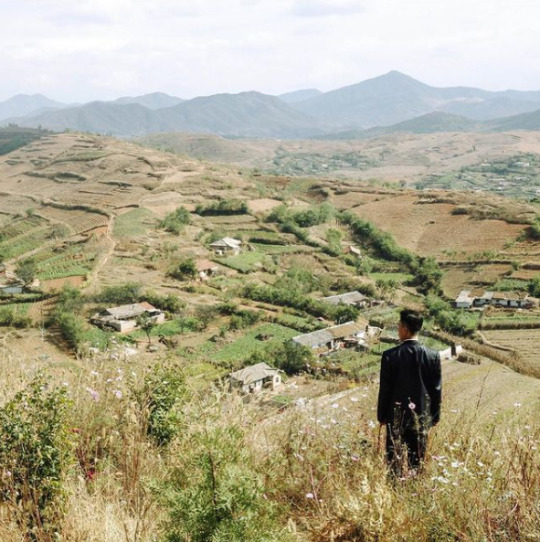
Hey, I'm back again with a very scary "tankie" post that asks you to think of North Koreans as people, and to consider their country not as a cartoonish dystopia, but as a nation that, like any other place on earth, has culture, traditions, and history.
Below is a collection of pictures from various cities and places in North Korea, along with a brief dive into some of the historical events that informs life in the so-called "hermit kingdom."
Warning: very long post
Kaesong, the historic city
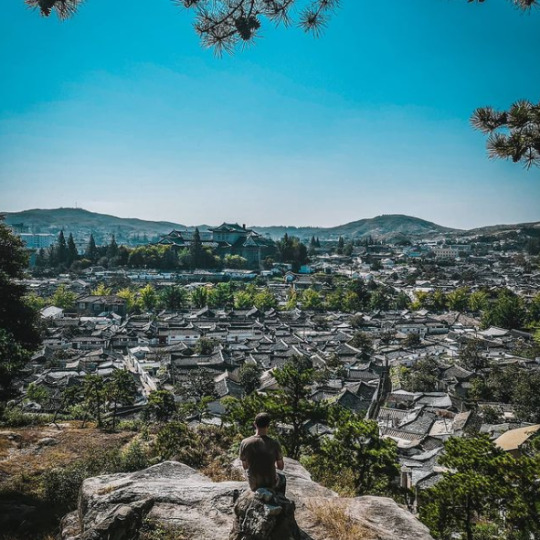
Beginning this post with Kaesong, one of the oldest cities in Korea. It's also one of the few major cities in the DPRK (i.e. "North Korea") that was not completely destroyed during the Korean war.
Every single city you'll see from this point on were victims of intense aerial bombardments from the U.S. and its allies, and had to be either partially or completely rebuilt after the war.
From 1951 to 1953, during what has now become known as the "forgotten war" in the West, the U.S. dropped 635,000 tons of bombs over Korea — most of it in the North, and on civilian population centers. An additional 32,000 tons of napalm was also deployed, engulfing whole cities in fire and inflicting people with horrific burns:
For such a simple thing to make, napalm had horrific human consequences. A bit of liquid fire, a sort of jellied gasoline, napalm clung to human skin on contact and melted off the flesh. Witnesses to napalm's impact described eyelids so burned they could not be shut and flesh that looked like "swollen, raw meat." - PBS
Ever wondered why North Koreans seem to hate the U.S so much? Well...
Keep in mind that only a few years prior to this, the U.S. had, as the first and only country in the world, used the atomic bomb as a weapon of war. Consider, too, the proximity between Japan and Korea — both geographically and as an "Other" in the Western imagination.
As the war dragged on, and it became clear the U.S. and its allies would not "win" in any conventional sense, the fear that the U.S. would resort to nuclear weapons again loomed large, adding another frightening dimension to the war that can probably go a long way in explaining the DPRK's later obsession with acquiring their own nuclear bomb.
But even without the use of nuclear weapons, the indiscriminate attack on civilians, particularly from U.S. saturation bombings, was still horrific:
"The number of Korean dead, injured or missing by war’s end approached three million, ten percent of the overall population. The majority of those killed were in the North, which had half of the population of the South; although the DPRK does not have official figures, possibly twelve to fifteen percent of the population was killed in the war, a figure close to or surpassing the proportion of Soviet citizens killed in World War II" - Charles K. Armstrong
On top of the loss of life, there's also the material damage. By the end of the war, the U.S. Air Force had, by its own estimations, destroyed somewhere around 85% of all buildings in the DPRK, leaving most cities in complete ruin. There are even stories of U.S. bombers dropping their loads into the ocean because they couldn't find any visible targets to bomb.
What you'll see below of Kaesong, then, provides both a rare glimpse of what life in North Korea looked like before the war, and a reminder of what was destroyed.
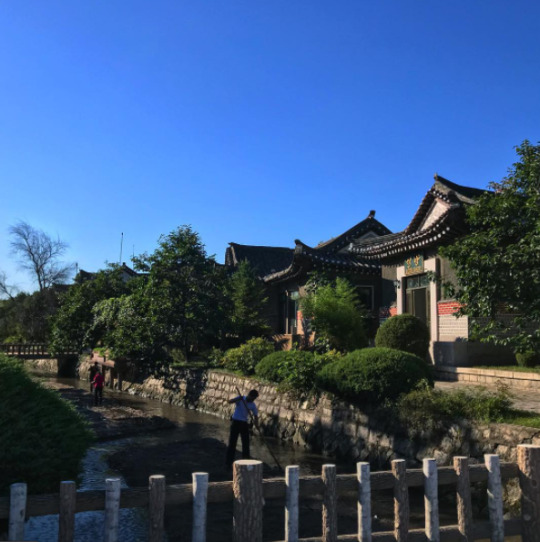
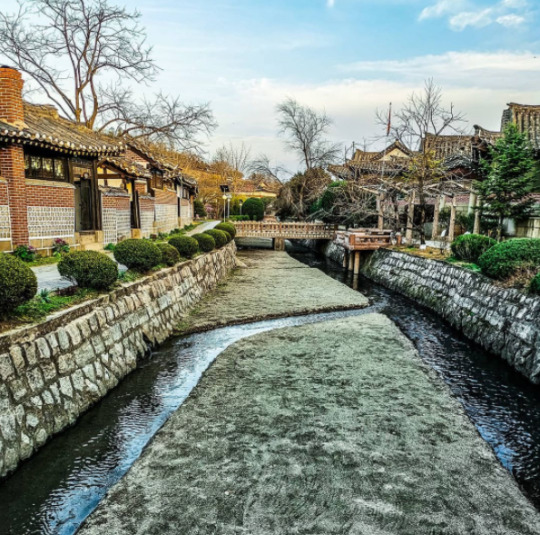
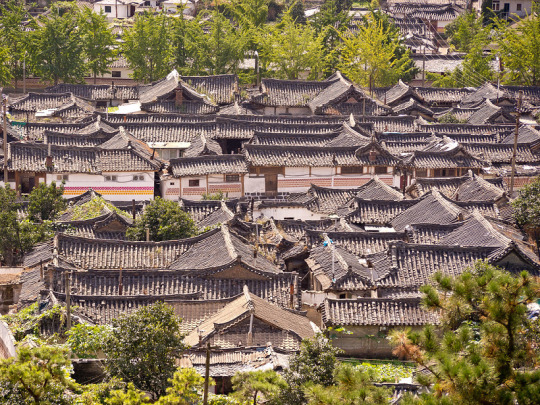
Kaesong's main street, pictured below.
Due the stifling sanctions imposed on the DPRK—which has, in various forms and intensities, been in effect since the 1950s—car ownership is still low throughout the country, with most people getting around either by walking or biking, or by bus or train for longer distances.
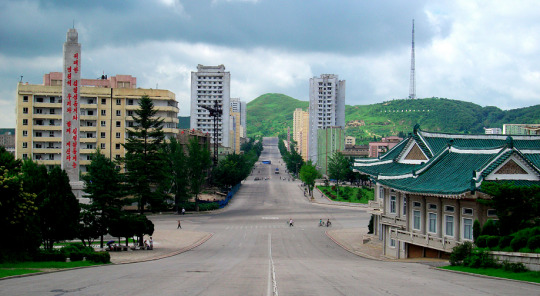
Kaesong, which is regarded as an educational center, is also notable for its many Koryŏ-era monuments. A group of twelve such sites were granted UNESCO world heritage status in 2013.
Included is the Hyonjongnung Royal Tomb, a 14th-century mausoleum located just outside the city of Kaesong.
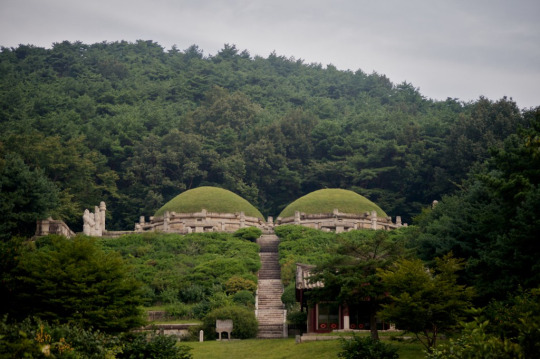
One of the statues guarding the tomb.

Before moving on the other cities, I also wanted to showcase one more of the DPRK's historical sites: Pohyonsa, a thousand-year-old Buddhist temple complex located in the Myohyang Mountains.
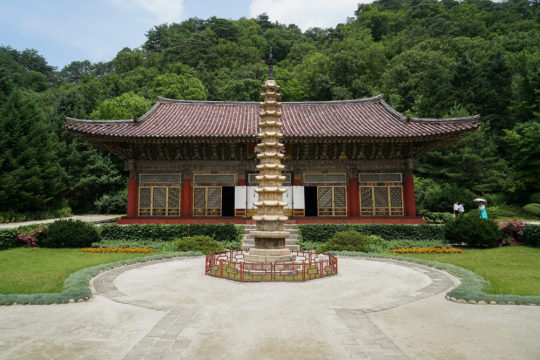
Like many of DPRK's historic sites, the temple complex suffered extensive damage during the Korean war, with the U.S. led bombings destroying over half of its 24 pre-war buildings.
The complex has since been restored and is in use today both as a residence for Buddhist monks, and as a historic site open to visitors.


Hamhung, the second largest city in the DPRK.
A coastal city located in the South Hamgyŏng Province. It has long served as a major industrial hub in the DPRK, and has one of the largest and busiest ports in the country.
Hamhung, like most of the coastal cities in the DPRK, was hit particularly hard during the war. Through relentless aerial bombardments, the US and its allies destroyed somewhere around 80-90% percent of all buildings, roads, and other infrastructure in the city.
Now, more than seventy years later, unexploded bombs, mortars and pieces of live ammunition are still being unearthed by the thousands in the area. As recently as 2016, one of North Korea's bomb squads—there's one in every province, faced with the same cleanup task—retrieved 370 unexploded mortar rounds... from an elementary school playground.
Experts in the DPRK estimate it will probably take over a hundred years to clean up all the unexploded ordnance—and that's just in and around Hamhung.
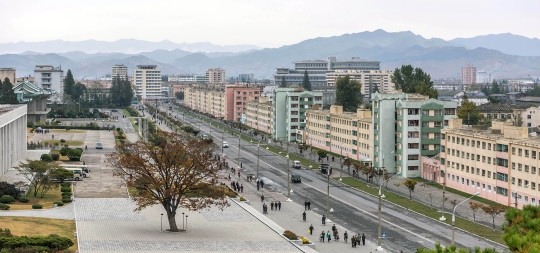
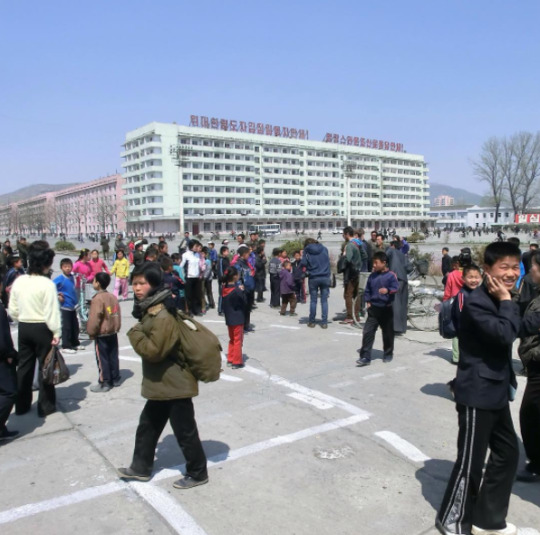
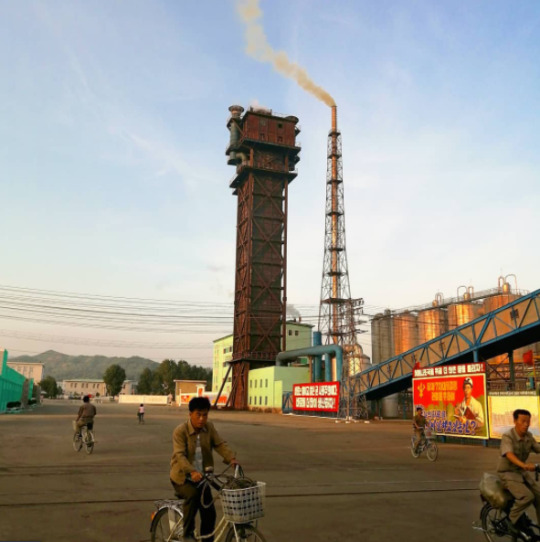
Hamhung's fertilizer plant, the biggest in North Korea.
When the war broke out, Hamhung was home to the largest nitrogen fertilizer plant in Asia. Since its product could be used in the creation of explosives, the existence of the plant is considered to have made Hamhung a target for U.S. aggression (though it's worth repeating that the U.S. carried out saturation bombings of most population centers in the country, irrespective of any so-called 'military value').
The plant was immediately rebuilt after the war, and—beyond its practical use—serves now as a monument of resistance to U.S. imperialism, and as a functional and symbolic site of self-reliance.
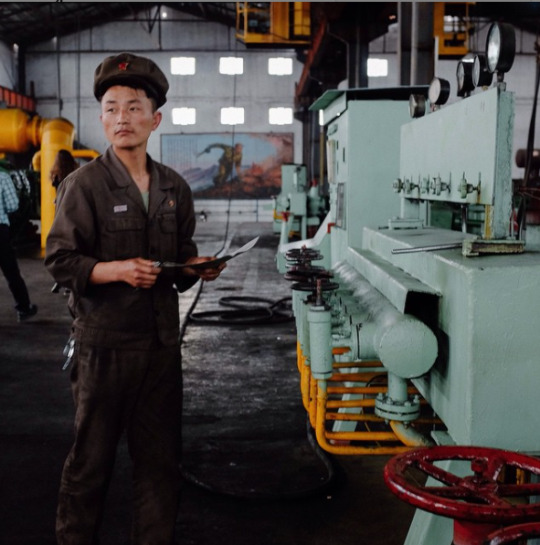
Chongjin, the third largest city in the DPRK.
Another coastal city and industrial hub. It underwent a massive development prior to the Korean war, housing around 300,000 people by the time the war broke out.
By 1953, the U.S. had destroyed most of Chongjin's industry, bombed its harbors, and killed one third of the population.
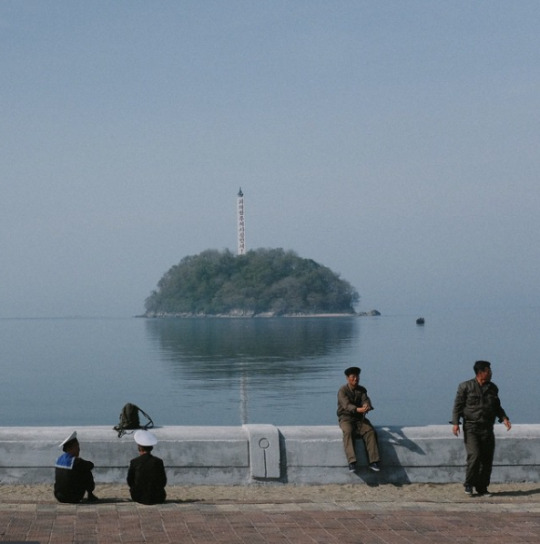


Wonsan, a rebuilt seaside city.
The city of Wonsan is a vital link between the DPRK's east and west coasts, and acts today as both a popular holiday destination for North Koreans, and as a central location for the country's growing tourism industry.
Considered a strategically important location during the war, Wonsan is notable for having endured one of the longest naval blockades in modern history, lasting a total of 861 days.
By the end of the war, the U.S. estimated that they had destroyed around 80% of the city.
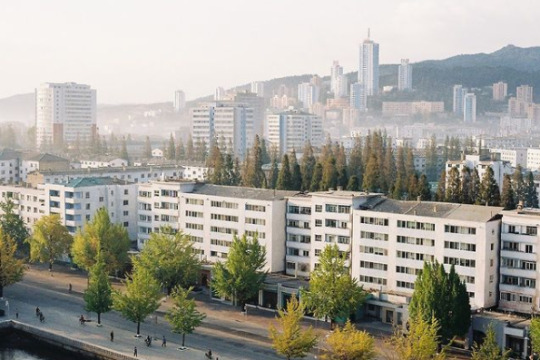
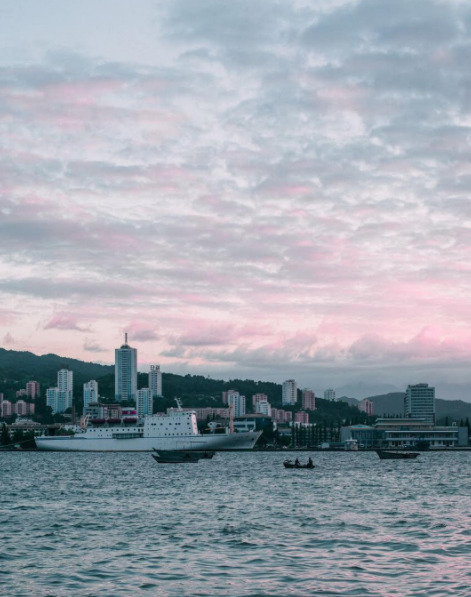
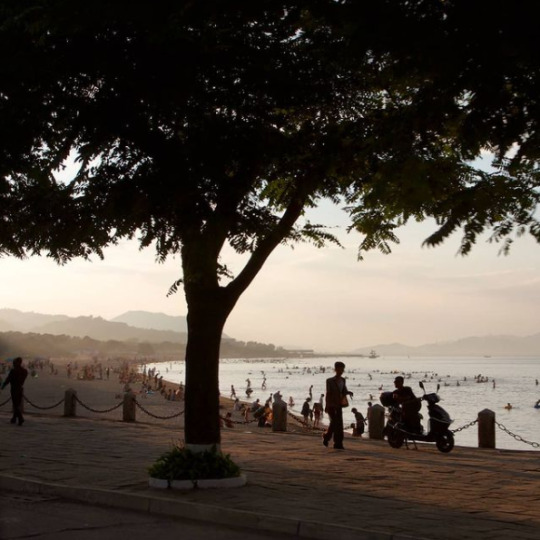
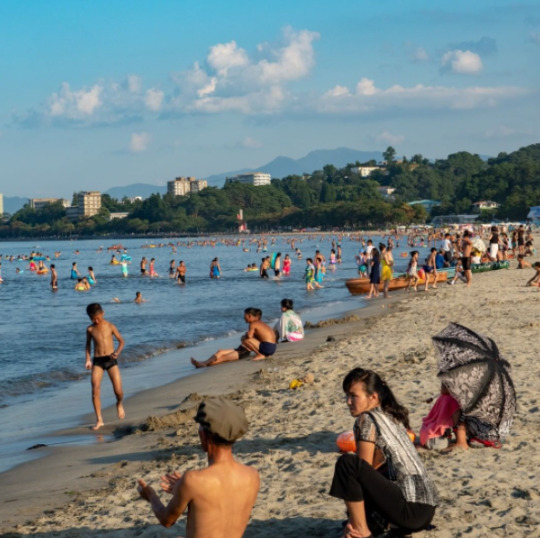
Masikryong Ski Resort, located close to Wonsan. It opened to the public in 2014 and is the first, I believe, that was built with foreign tourists in mind.
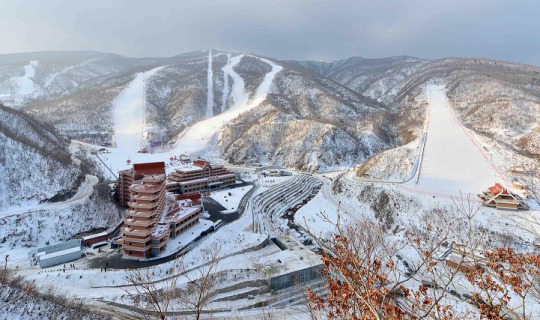
Sariwon, another rebuilt city
One of the worst hit cities during the Korean War, with an estimated destruction level of 95%.
I've written about its Wikipedia page here before, which used to mockingly describe its 'folk customs street'—a project built to preserve old Korean traditions and customs—as an "inaccurate romanticized recreation of an ancient Korean street."
No mention, of course, of the destruction caused by the US-led aerial bombings, or any historical context at all that could possibly even hint at why the preservation of old traditions might be particularly important for the city.
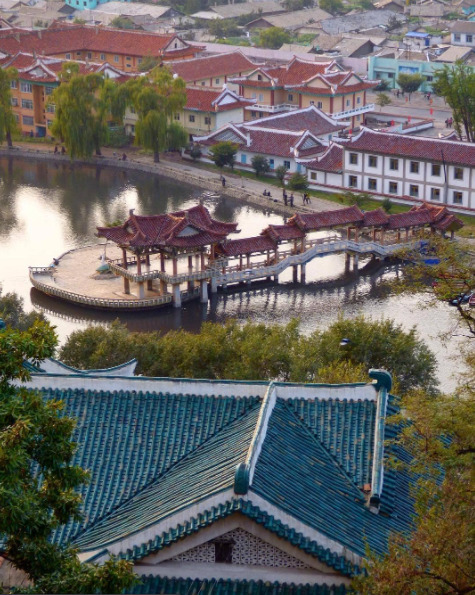

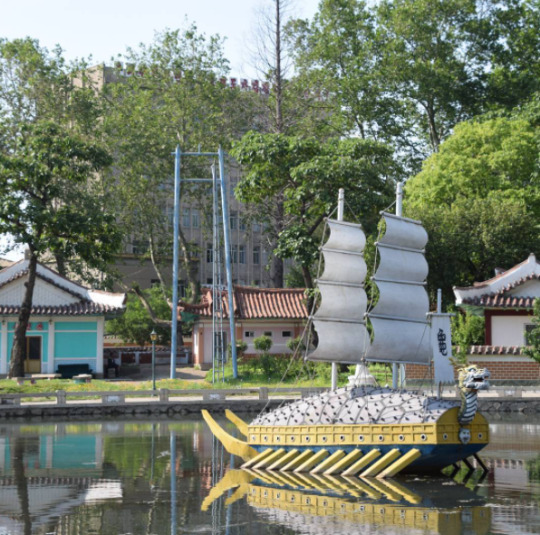
Life outside of the towns and cities
In the rural parts of the DPRK, life primarily revolves around agriculture. As the sanctions they're under make it difficult to acquire fuel, farming in the DPRK relies heavily on manual labour, which again, to avoid food shortages, requires that a large portion of the labour force resides in the countryside.
Unlike what many may think, the reliance on manual labour in farming is a relatively "new" development. Up until the crisis of the 1990s, the DPRK was a highly industrialized nation, with a modernized agricultural system and a high urbanization rate. But, as the access to cheap fuel from the USSR and China disappeared, and the sanctions placed upon them by Western nations heavily restricted their ability to import fuel from other sources, having a fuel-dependent agricultural industry became a recipe for disaster, and required an immediate and brutal restructuring.
For a more detailed breakdown of what lead to the crisis in the 90s, and how it reshaped the DPRKs approach to agriculture, check out this article by Zhun Xu.

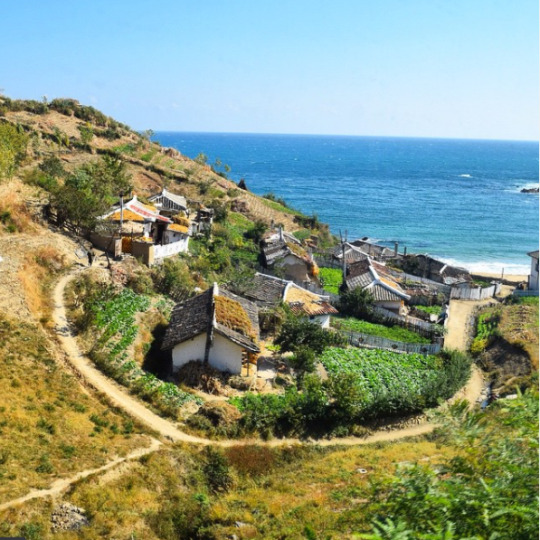
Some typical newly built rural housing, surrounded by farmland.
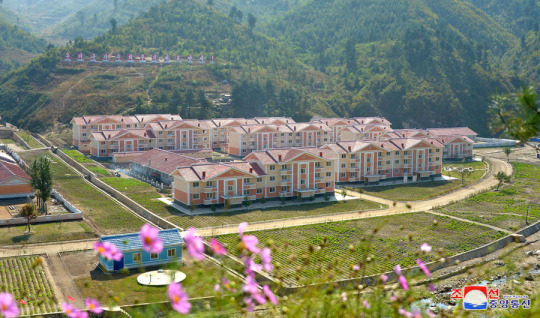
Tumblr only allows 20 pictures per post, but if you want to see more pictures of life outside Pyongyang, check out this imgur album.
#dprk#north korea#i've had this post unfinished in drafts for almost a year#also sorry about the spelling and potential formatting issues it's a nightmare to edit at this point#it was literally just meant to be a collection of picture and then the writing just sort of happened#enjoy the brief heritageposts history lesson i guess
6K notes
·
View notes
Text
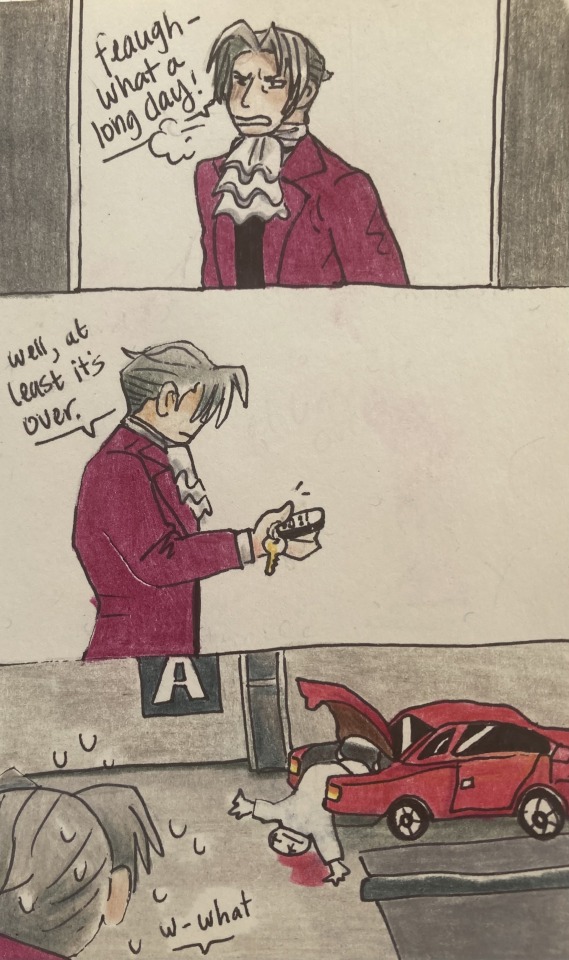
Nothing like finding a body in the trunk of your cherry red sports car after a hard day at work!
#I am HOWLING LAUGHING reading the reblog tags lmaoooooo ty everyone#Phoenix Wright#Miles Edgeworth#SL-9 Incident#Rise From the Ashes#Detective Goodman#Edit: thank you for 1k+ notes everyone!!!!!#Ace Attorney#Edit: thank you for 2k+ notes guys??!!!!#Edit: THREE THOUSAND NOTES WTF IS GOING ON HAHAHA THANK YOU#Edit: g- guys 4k notes please someone tell me what’s happening hahahaaaaaaa#Edit: 5 THOUSAND NOTES I'M SCREAMING 😵💫#6 THOUSAND NOTES GUYS WE'RE MAKING HISTORY HAHA
6K notes
·
View notes
Text

Circa 1900, Bat in Flight with the Man in the Moon brooch. Made by Unger Brothers, USA. ❤︎₊ ⊹
#grunge#goth#metallic#bats#pngs#transparent#editing#png#mine#transparent png#1990s#circa 1990#unger brothers#brooches#vintage#USA#brooch#for some reason. I lost the source for this one. the website I used and my history just *poofed* where I got this info and image from. hrm.#i'll just link the website i found it from. If anyone *does* re-find the brooch on there... lmk.#nightmareseditingpngs
5K notes
·
View notes
Text









🌛🤎⚜️🤎Moon Bronze🤎⚜️🤎🌜
#gifs(edits) made by me :)#assassin1513#mystical#mystic#stars#moon#moon aesthetic#moon vibes#moon and stars#moonshine#moonlight#moonchild#mooncore#history#histoire#history aesthetic#bronze#gold#gold aesthetic#golden#golden aesthetic#magic#magical#fantasy#fantasy aesthetic#fairy#fairy aesthetic#fairycore#grunge#to infinity and beyond
3K notes
·
View notes
Text
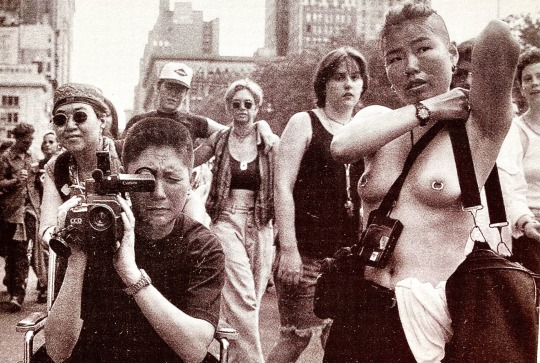
"Dyke March 1994" by Morgan Gwenwald
source: The Wild Good: Lesbian Photographs & Writings on Love, edited by Beatrix Gates
#lesbian#lesbian literature#dyke#dyke literature#archived#thatbutcharchivist#dyke march#dyke march 1994#lesbian history#lesbian photography#author: beatrix gates#photographer: morgan gwenwald#the wild good#year: 1996#publisher: anchor books#publisher: doubleday dell publishing group inc.#butch#butch dyke#butch lesbian#why does it look alright while i'm editing and then hitting the finished button is like unleashing an entirely different monster#ai yai yai#i'll figure it out#asian lesbian
21K notes
·
View notes
Text



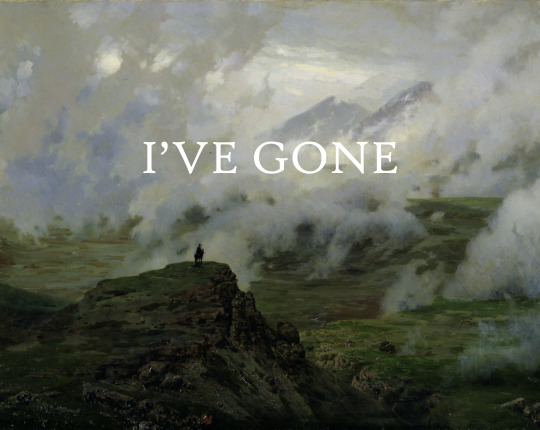



A Storm in the Rocky Mountains, Mt. Rosalie – Albert Bierstadt (detail) // Lofoten Island – Lev Lagorio // Rosenlaui – François Diday // Mount Elbrus in the Clouds – Nikolai Yaroshenko // Storm in the Mountains – Hermann Ottomar Herzog // Sierra Nevada – Albert Bierstadt // Rocky Mountain Landscape – Albert Bierstadt // Inkpot Gods – The Amazing Devil
#between this and my thoroughfare edit i guess i'm entering my dramatic landscape era#albert bierstadt#hermann herzog#rocky mountains#landscape painting#landscape#inkpot gods#ruin#ruin album#ruin the amazing devil#the amazing devil ruin#ruin tad#the amazing devil#tad#madeleine hyland#joey batey#art#art history#lyrics#lyric art
14K notes
·
View notes
Text
Chappell Roan at the VMAs was everything. People keep confusing her outfit with Joan of Arc but she was actually Julie D’aubigny, which is so much more impactful. Let me explain.
In simple terms she was very good at fencing and she even did opera singing. But what really connects her to what Chappell did is her love story. Julie was a queer woman, she often dressed in men’s clothing but did not attempt to come off as a man.
At some point she had a relationship with a woman, yes a romantic one. Unfortunately, but not surprisingly, the girl was shipped off to a convent to prevent the two from being in contact. And to frame it simply Julie followed after her, snuck in pretending to be apart of the whole thing, created this whole elaborate plan to sneak her lover out which included getting a dead nuns body and placing it in the girls bed followed by burning the building down, therefore faking the girls death.
They ran away together. But, a couple months later the girl went back to her family. Julie’s plan was found out and she was charged as a man on a variety of crimes, she was sentenced to death by burning.
Now let’s put this all together.
1. Chappell was consistently using swords
2. In the performance she looked back and shot a flaming arrow at a building burning it down which goes back to the burning of the convent.
3. The song performed was Good Luck, Babe! And Julie’s lover going back to her family is so Good Luck, Babe! coded. Like literally ur lover followed you to a conversion thing, setting up this whole thing so that you can run away together and love freely and then you go back home to ur family and she dies at the stake. Although not surprising for the time period it’s still so crazy and soooo poetic.
4. Julie d'Aubigny has this whole tragic queer story and Chappells music centers around that sort of thing, and what’s more impactful than a literal gay performer dressing as a gay performer who was killed for being gay?
Do you guys see what I mean??? So, while I love the edits I’m seeing please keep in mind that it is not Joan of Arc. In fact, I think it’s super important that this is corrected considering how real and tragic Julie’s story was.
#chappell roan#chappell roan vmas#mtv vmas#vmas#vmas 2024#julie#julie d'aubigny#good luck babe!#history#joan of arc#music#gay history#gay#lesbian#chappell roan fans#chappell roan edit#real history#edits#saphic#saphic history
3K notes
·
View notes
Text



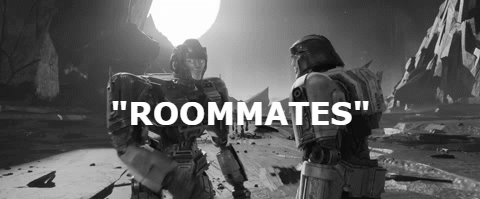


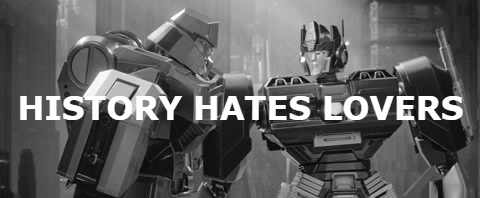
I'm sorry, I couldn't stop myself.
#megop#transformers one#megatron#optimus prime#d 16#orion pax#megatron x optimus prime#tf one#megaop#tf1#tf one megop#d 16 x orion pax#transformers#transformers edit#history hates lovers#tf one spoilers#tf one megatron#transformers one spoilers#optimus x megatron#tf one optimus#tf one 2024
2K notes
·
View notes
Text
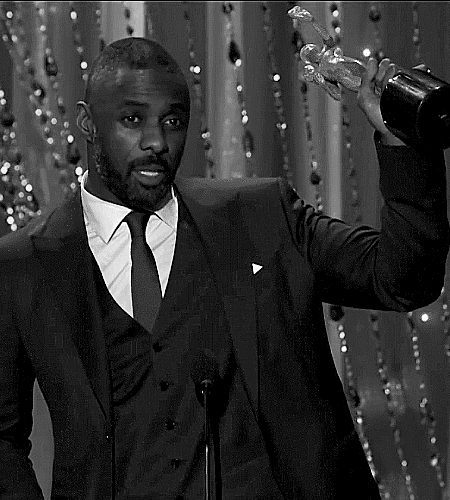




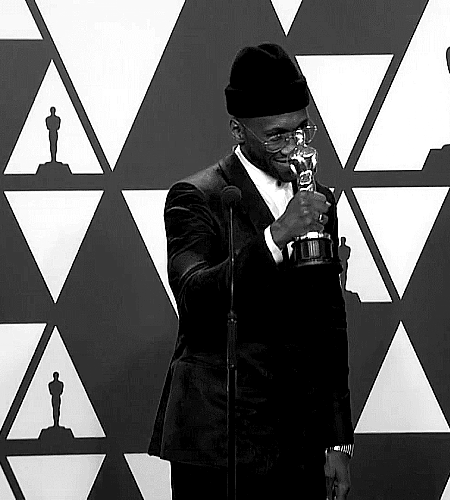

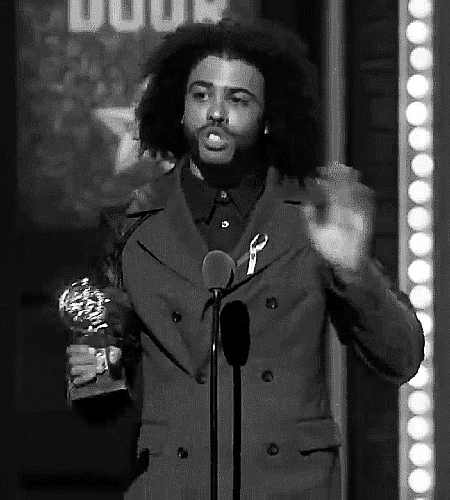


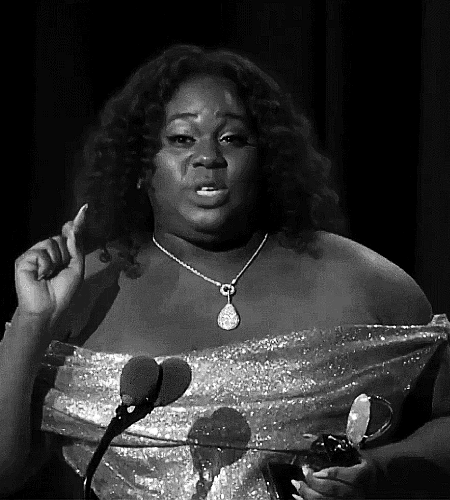

Young, Gifted, & Black: HAPPY BLACK HISTORY MONTH!
#happy black history month <3#idris elba#ayo edebiri#kendrick lamar#beyonce#michaela jaé rodriguez#mahershala ali#lupita nyong'o#daveed diggs#renee elise goldsberry#nicco annan#alex newell#ariana debose#actoredit#actressedit#musicianedit#pocedit#lgbtqedit#bhmc**meme#edit**#&*#so many legends <3#and many more to celebrate!
4K notes
·
View notes
Text


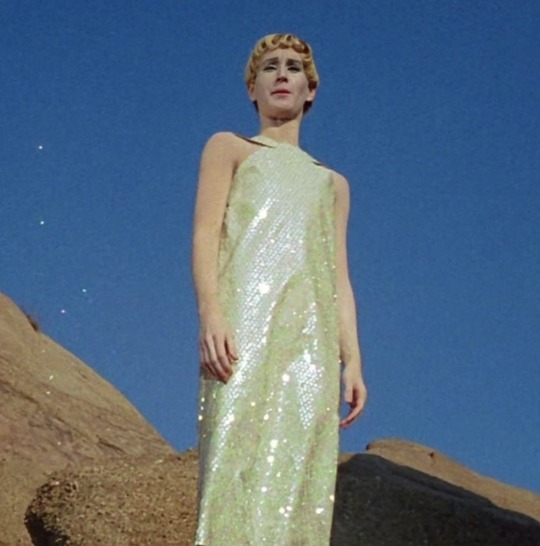
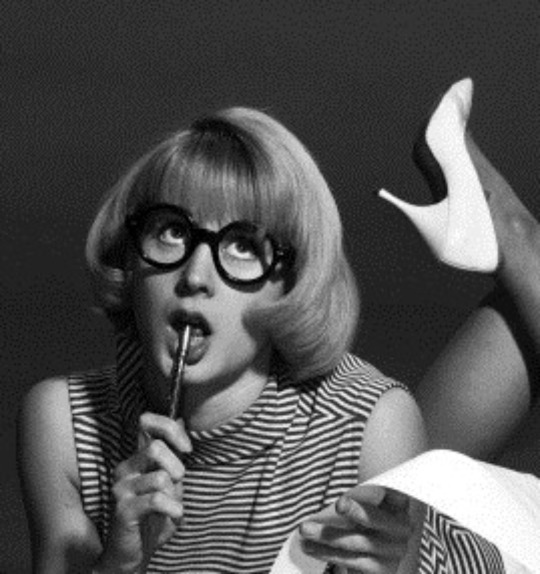
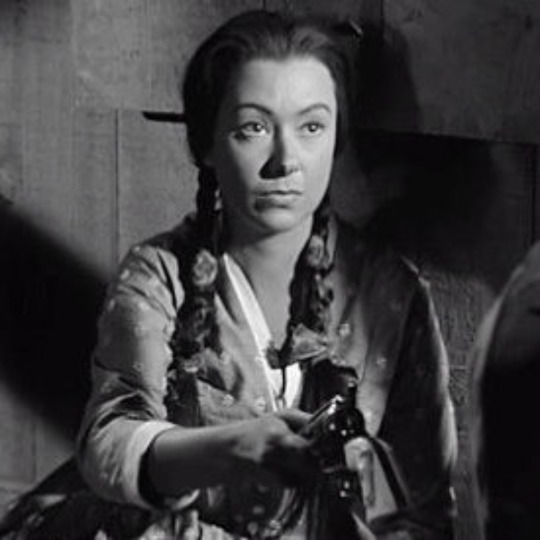
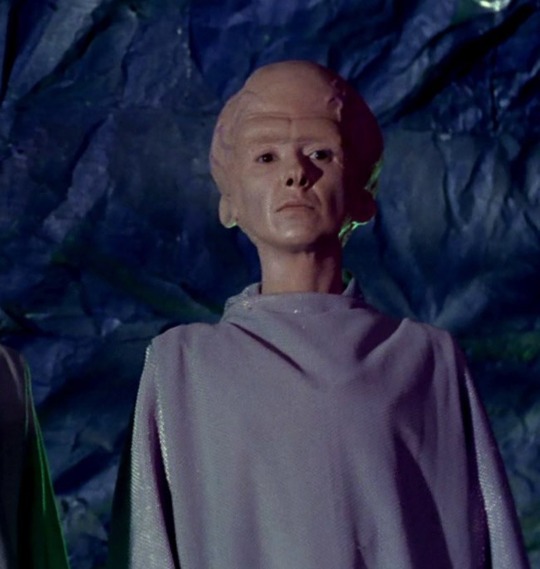
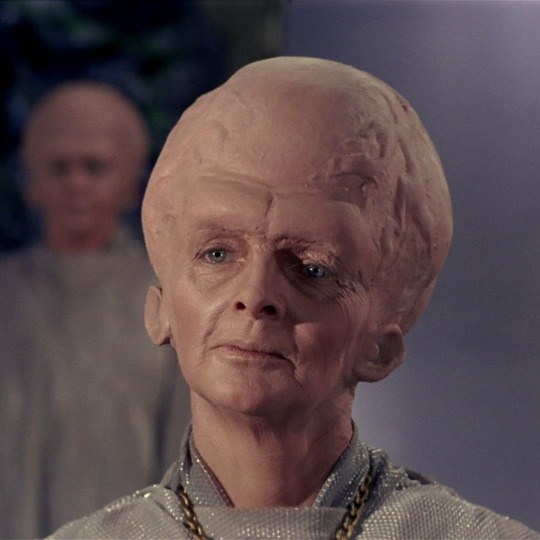

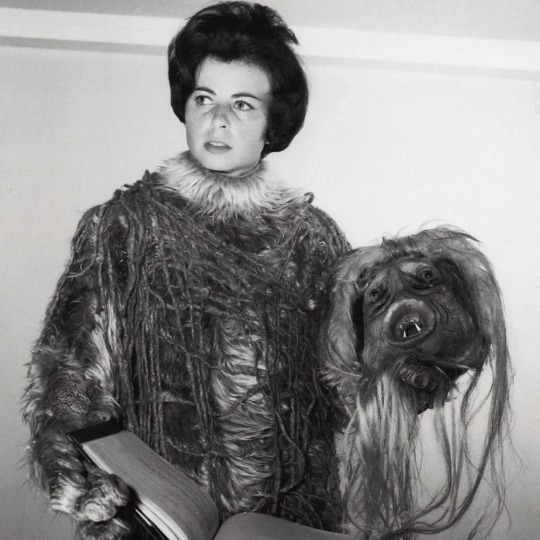
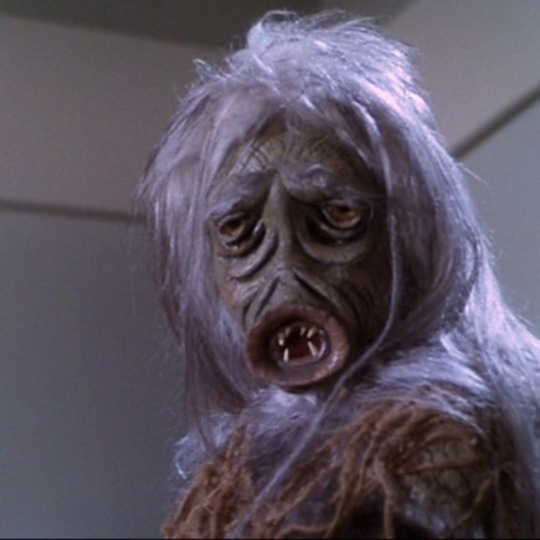
Georgia Schmidt, Carole Shelyne, Serena Sande, Meg Wyllie, & Sandra Lee Gimpel
A tribute to some lesser-known women of Star Trek :)
#i love women#star trek#iconic#star trek tos#star trek the original series#science fiction#costume design#aliens#space#classic#1960s#women#retro#screencaps#feminism#my edit#representation#the cage#the man trap#arena#sci fi#props#stage makeup#trek history
2K notes
·
View notes
Text

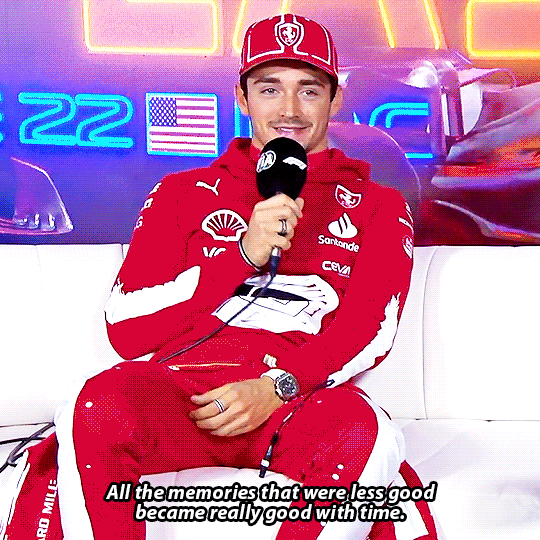

"Then you get older, and you look back at moments that maybe you didn't enjoy at the time - that are very funny. Yeah, it was good times."
Charles Leclerc is asked about his karting days with Max Verstappen. 🎥: post-qualifying press conference, 2023 Las Vegas Grand Prix
#charles leclerc#max verstappen#lestappen#it's max's little smile in the background that gets me every time#their shared history is so special to me#*#my edit#f1#f1edit#interview#post qualifying#press conference#las vegas gp 2023#fave
4K notes
·
View notes